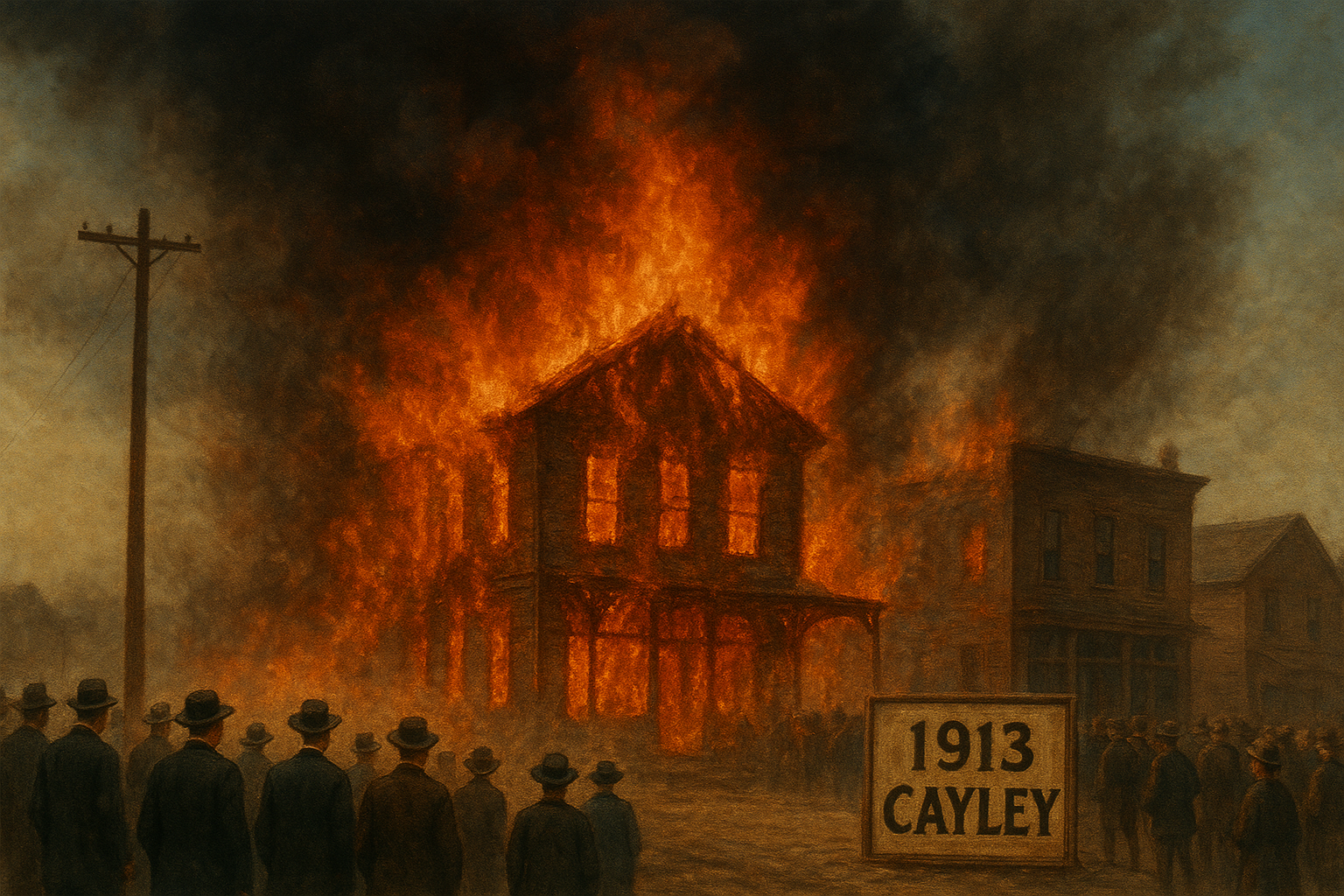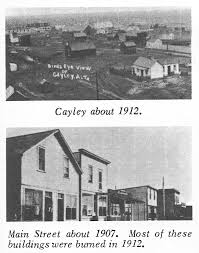The morning of Saturday, January 4, 1913, began with tragedy for the small prairie town of Cayley. At about 4:00 a.m., flames were spotted in the store of L.R. Caspell, one of the key businesses along the main street. Within minutes, the blaze spread rapidly, consuming not only Caspell’s premises but three neighboring buildings owned by the Wickens Brothers.

Despite the cold winter air, the fire raged with a terrifying intensity. Cayley’s residents formed bucket brigades, but the wooden structures—dry from years of prairie winds—burned too quickly. By dawn, the heart of Cayley’s business block was in ashes.
This is a news paper article at the time.

Losses Recorded
The newspaper report catalogued the damages in stark detail:
- L.R. Caspell’s general store was valued at about $8,000. Caspell carried insurance, but much of the stock and building were reduced to cinders.
- D.M. Boyd’s furniture and clothing stock, worth about $700, was completely destroyed. Unlike Caspell, Boyd had no insurance, leaving him with nothing.
- A third tenant, identified at the time as “the Chinaman”, lost a stock of goods valued at $1,000, though this business was insured.
- The Wickens Brothers, who owned the block of four buildings themselves, suffered the most devastating blow. None of the structures were insured, meaning their entire investment was wiped out overnight.
A Community Tested
For a small town like Cayley, the fire was more than a local misfortune—it was a test of survival. Businesses such as Caspell’s supplied farmers and ranchers across the district with goods ranging from groceries to hardware. Boyd’s store and the Chinese-owned shop were equally essential, representing both the diversity and resilience of small-town enterprise on the prairie. With four commercial properties destroyed and thousands of dollars in uninsured losses, Cayley’s economy staggered. Yet, as the newspaper noted, the townspeople immediately began to discuss rebuilding. The railway still ran through town, the elevators still shipped grain, and the will of the people ensured that Cayley would not vanish from the map.

Legacy of the Fire
The fire of January 1913 was one of the most destructive events in Cayley’s early history. It highlighted both the vulnerability of prairie settlements—where a single blaze could wipe out a business block—and the resilience of communities determined to endure.
Though the Wickens Brothers never recovered their uninsured losses, and some businesses never reopened, Cayley persisted. The railway continued to bind the hamlet to the wider world, and new buildings eventually replaced the ones lost in that early-morning blaze.
The story of the 1913 fire remains a chapter in Cayley’s history, preserved through the words of that week’s newspaper: a stark reminder of how quickly fortunes could turn, and how a community’s strength was measured not in its losses, but in its resolve to rise again.

Leave a Reply
You must be logged in to post a comment.